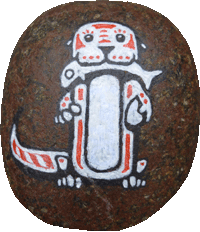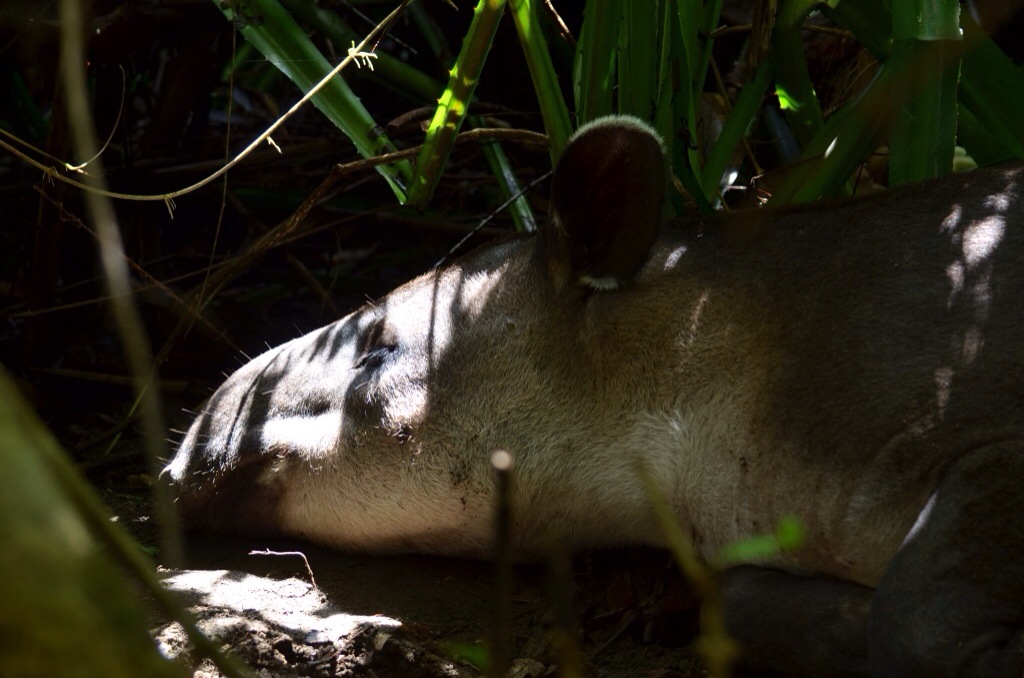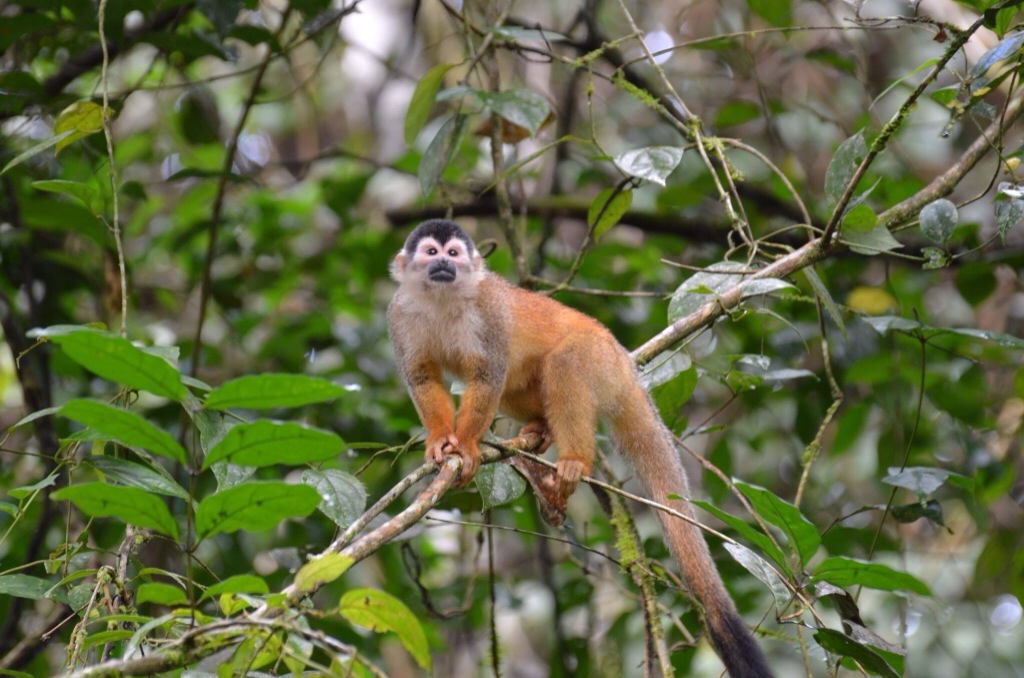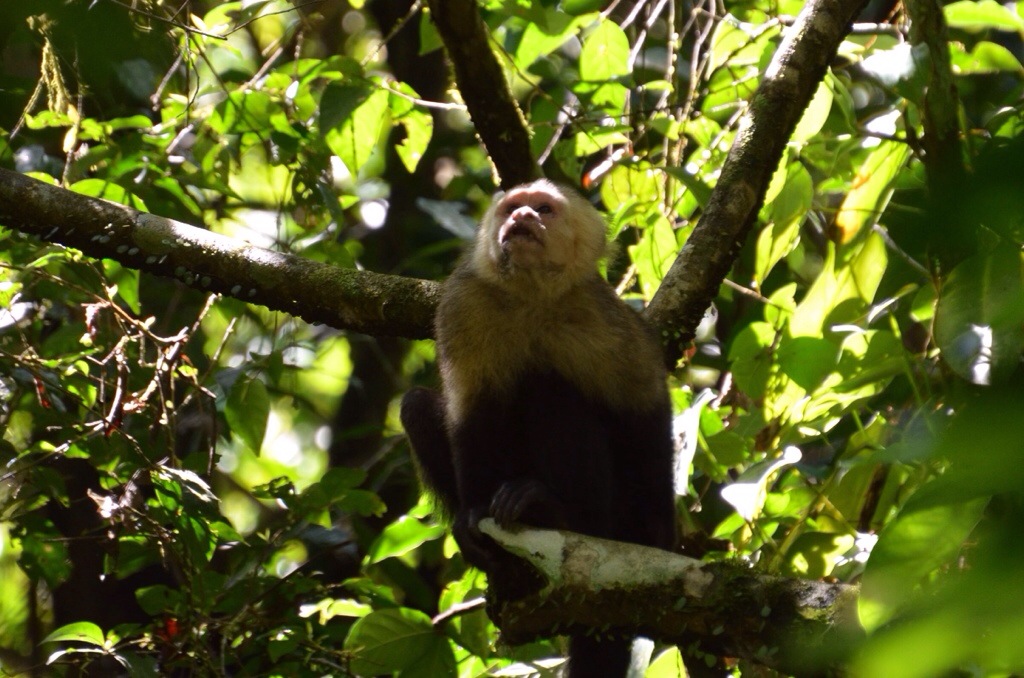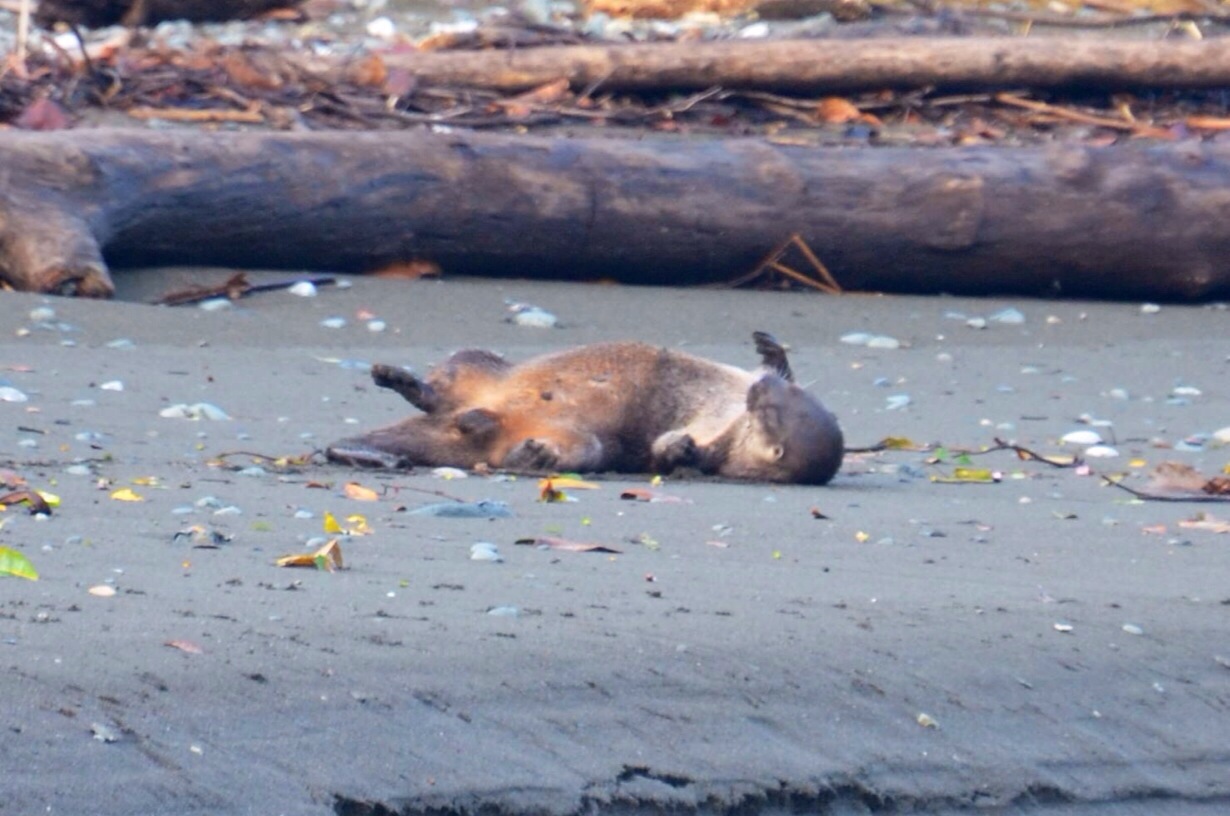21st December 2013
It’s true, Sirena station is a great place to look for mammals. I think it beats all our other rainforest visits for number of species and quality of viewing, especially as it was all in daylight (the few hours of early morning spotlighting being very unproductive). Sometimes it is stupidly easy; an ocelot strolled across the wide grassy space in front of the ranger station, eliciting shouts of “ocelot!” from all the guides and a frenzy of feet slapping on wooden boards. Naturally, I happened to be at the opposite end of the station and caught just a tail.
Much better was our view of a northern tamandua and her cub, spotted by Maureen in a tree overhead. They curled up in the high branches and started play-fighting together, very cute. The tamandua is an anteater, but one that lives mainly in trees.
The Baird’s tapir is probably the star attraction at Sirena. There’s one who very obligingly sleeps through the daytime in a thicket of rushes near the river mouth, and manages to stay asleep while a succession of guides take a procession of tourists two-by-two to go and look at it. Lest I sound churlish, it really was wonderful to be about four feet from such a big beast without disturbing it at all. After all, if it was disturbed it wouldn’t sleep there every day, right? I certainly didn’t see a chain. : )
Early next morning we waited patiently and watched it stroll through the forest back to its daytime rest, something the day-trippers don’t get to see. I spotted another tapir swimming across the river a bit later.
It would be wrong to ignore the monkeys, even if by the second day we had started to do just that, as they are very easy to find. Solemn mantled howlers with their mighty dawn whooping, long-legged spider monkeys making effortless swings through the trees, crowds of tiny squirrel monkeys seemingly everywhere one minute then gone the next, and gangs of alarmingly toothy white-faced capuchins, including one that I’m sure played Nosferatu or Dracula in a film recently.
Oh, and of course we got our otter. This is the neotropical river otter, different species from our Eurasian otter but surprisingly similar in looks and habit. Walking quietly along on the only occasion our guide Roger wasn’t with us we surprised the otter in a creek we had to cross, and off he swam. But we guessed he would carry on down to where the creek met the river and took ourselves backs there. Presto! A minute later the otter popped out on the beach over the river and trotted along in plain sight for us.
So, on balance, very glad we took a trip to Sirena station in Corcovado NP. And never going again. : )
Related Images:
